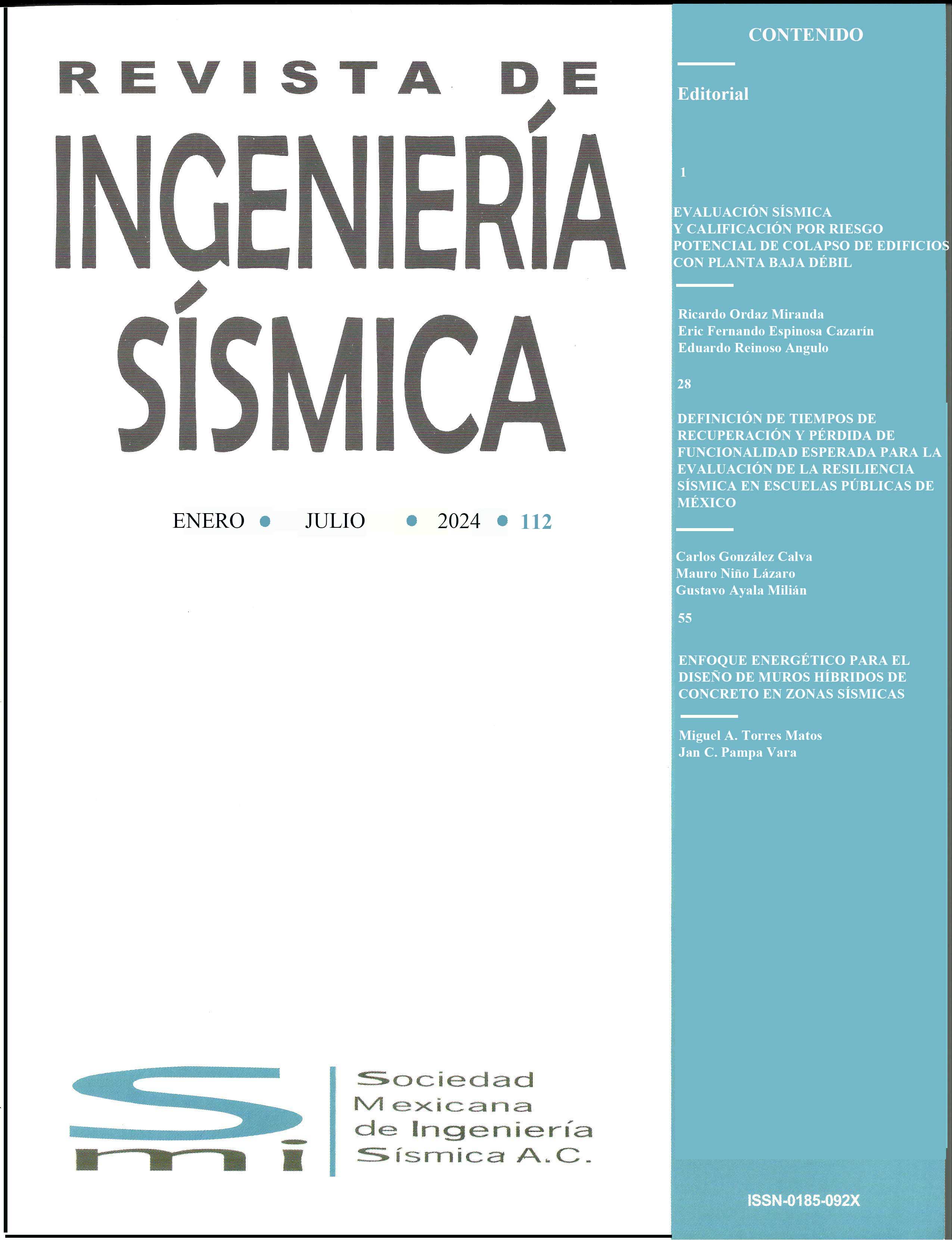RELEVANT PARAMETERS OF THE STRESS-DEFORMATION CURVE IN COMPRESSION OF UNCONFINED CONCRETS PRODUCED IN MEXICO
DOI:
https://doi.org/10.18867/ris.103.534Keywords:
Concrete, compressive stress, modulus of elasticity, secant modulus, compressive stress-strain curve, density of concrete measureAbstract
The seismic design standard for the city of Mexico prescribes the use of no-lineal analyses, for which it is necessary to define, among various others, the parameters of the unconfined concrete stress-strain relationship. This study describes results of analytical and experimental studies of unconfined concrete produced in Mexico. Based on experimental test data obtained in this study, recommendations for estimating parameters that define the unconfined concrete stress-strain curve are given. Test of concrete cylinders were conducted at the Instituto de Ingeniería (Institute of Engineering), UNAM, México, following testing procedures according to national and international standards. and taking average results of tested samples. In this research, expressions for determining the modulus of elasticity Ec, are given. Parameter Ec is relevant for computing lateral displacements of structures subjected to earthquake actions, as well as for computing periods of vibration of these structures. It is also presented expressions to define other important parameters of the concrete stress-strain curve, which are considered when modeling plastic hinges in nonlinear analysis. Such parameters are the strain at the stress f’c of unconfined concrete specimen, e’c, and the ratio of Ec to the secant modulus Esec. Recommendations are given for estimating these parameters for concrete produced in Mexico.
Downloads
References
ACI-318 (2014). Building Code Requirement for Reinforced Concrete. American Concrete Institute.
ACI-363 (1992). Report on High-Strength Concrete. American Concrete Institute Committee 363.
ASTM-C-469 (2002). Standard Test Method for Static Modulus of Elasticity y Poisson’s Ratio of Concrete in Compression. American Society for Testing Materials.
Chen, Y, D J Visintin y U J Alengaram (2013). “Size-dependent stress-strain model for unconfined concrete”. Structural Engineering, ASCE, 14(5), 11. https://doi.org/10.1061/(ASCE)ST.1943-541X.0000869
De Nicolo, B, L Pani, y E Pozzo (1994). “Strain of concrete at peak compressive stress for a wide range of compressive strengths”. Mater. Struct 27, (pp. 206–210). https://doi.org/10.1007/BF02473034
Mendoza, C J (1985). “Propiedades mecánicas de los concretos fabricados en el Distrito Federal”. Instituto de Ingeniería UNAM.
NMX-C-128 (1997). “Determinación del módulo de elasticidad estático y relación de Poisson”. Organismo Nacional de Normalización y Certificación de la Construcción y Edificación, S.C.
NMX-C-159 (2004). “Elaboración y curado de especímenes en el laboratorio”. Organismo Nacional de Normalización y Certificación de la Construcción y Edificación, S.C.
NMX-C-160 (2004). “Elaboración y curado de especímenes de concreto”. Organismo Nacional de Normalización y Certificación de la Construcción y Edificación, S.C.
NTC (2004). “Normas técnicas complementarias para diseño y construcción de estructuras de concreto”, Gaceta Oficial de Distrito Federal.
NTC (2017). “Normas técnicas complementarias para diseño y construcción de estructuras de concreto”, Gaceta Oficial de la Ciudad de México.
NTCS (2017). “Normas técnicas complementarias para diseño por sismo”, Gaceta Oficial de la Ciudad de México.
Rodelo, R, M Rodriguez, y J Restrepo (2019), “Estudio de las características de la curva esfuerzo-deformación de concretos típicos en México”, Series del Instituto de Ingeniería, SID 706, https://aplicaciones.iingen.unam.mx/ConsultasSPII/DetallePublicacion.aspx?id=5182






